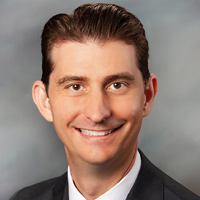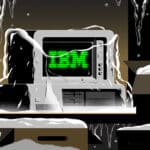
The Secure Act 2.0 is a boon for fans of the Roth account. While falling short of mandating that all employer plans offer a Roth option, it greatly expands the ability for a wider range of workers to get more money into a Roth account each year.
There are already dozens of sources for advisors to get a general run-down of all the moving parts in Secure 2.0. Rather, I intend here to discuss my thoughts on the rules specific to Roth accounts.
401(k) plans get new Roth rules
Employer-matching contributions
One of the most attractive new rules for employees who contribute to Roth 401(k) accounts is that the employer-matching contributions can now be made on an after-tax Roth basis. These Roth matching contributions will be taxable current income for the employee.
Roth employer-matching contributions must also be non-forfeitable, so there is an as-yet unresolved gray area for plans that have a vesting schedule. My hope is that this will encourage plans to drop their vesting schedules altogether. Employers can chalk their matching contributions up to the cost of human capital. No one stays multiple years in a job they would have otherwise left long ago just to run out the clock on their 401(k) employer-match. So, vesting schedules are more stick than carrot anyway. Of course, a given plan must offer the Roth option in the first place — not all do — for these new rules to benefit their employees.
Catch-up contributions
Beginning in 2024, employees with larger paychecks (those earning more than $145,000 per year) who wish to make age 50-plus catch-up 401(k) contributions will be forced to make them on a Roth basis. The new rule even goes so far as to disallow high earning employee from being able to make a catch-up contribution at all if an employer plan does not offer a Roth option for catch-up contributions by eligible plan participants earning less than $145,000.
This comes off as perhaps a gentle nudge to those plans that don’t currently offer Roth: “Begin offering Roth, or your senior employees might revolt.” As with the Roth matching contributions above, stay tuned for how this plays out going forward.
Speaking of catch-up contributions, beginning in 2024, they will start being indexed to inflation in $100 increments. Beginning in 2025, there is even a special carve-out for employees age 60 to 63 that will allow them to make catch-up contributions up to either $10,000 or 150% of the 2024 amount. Great news for folks in the last handful of working years. Ironically (or not, depending on how jaded one is), most of the people who can fit a $10,000 catch-up contribution into their budget will probably run afoul of the income limits on the new mandatory Roth catch-up contributions. Convenient! For the tax collector.
No more RMD requirements
Also beginning in 2024, Roth 401(k) balances will no longer be subject to RMD requirements. I applaud this move, and it is perhaps the one give-back the legislation offers those who are using Roth accounts for their highest and best use — keeping the balance invested tax-free for as long as possible. It squares the RMD rules for the Roth 401(k) and Roth IRA (now, neither account type has an RMD requirement) and was a big reason why advisors recommend rolling the Roth 401(k) balance into a Roth IRA. Going forward, the rationale and justifications to avoid a Prohibited Transaction will look mostly identical to the ones for traditional pre-tax balances for a rollover recommendation.
More options for workplace Roth accounts
Employees of small businesses that utilize SEP and SIMPLE retirement plans could now have the option of making contributions on an after-tax Roth basis. I see a Roth SEP IRA as a good option for the self-employed person who may have enough income to be able to sock some money away, but not enough to put them into a tax bracket that would make a pre-tax account more sensible. Until now, SEP IRAs were largely used to lower the current tax bill of a high-earning sole proprietor, so we’ll see how popular Roth SEP IRAs may ultimately become.
In any case, there will be some time lag until Roth SEP and Simple IRAs becomes possible on a practical level. That’s because custodians can decide not to offer Roth versions of their SEP and SIMPLE accounts – like the way Charles Schwab has elected not to offer a Roth individual 401(k) option. Those custodians that do decide to offer Roth SEP and SIMPLE accounts will need some time to revamp their operations and systems to allow for Roth contributions to commence.
Why did Congress do this?
It’s not controversial to say that at least the Roth-specific changes in Secure 2.0 are blatantly intended to be a current revenue generator for the government, with new rules making it easier for savers to pay taxes today. We all have clients over age 50 who are in their peak earning years. As mentioned above, these clients will be forced to pay current taxes on their catch-up contributions, thus giving advisors additional opportunities for tax planning. Beyond this, I really don’t see anything in Secure 2.0 that will be an immediate game-changer for most workers and retirees.
I‘m on record as not being a member of the very popular “Everyone Should Always Do Roth” tribe. Nothing in Secure 2.0 changes that thesis. In fact, it’s almost as if the government wants us all to have the bulk of our savings in Roth accounts in 20 or 30 years. What if trillions of dollars of untaxed growth in Roth accounts proves too much for a future political administration to handle?
Perhaps the only fair thing will be to means-test the tax-free status of Roth distributions. Before you write that off as “tin foil hat” stuff, remember that for the first 49 years Social Security was in place, all benefits were paid tax-free. In the same vein, traditional Medicare premiums were the same for everyone until the introduction in 2007 of IRMAA (a phantom tax on high earners, but nonetheless).
Final thoughts
All advisors must build client plans using rules that are in place today. We can’t guess the future tax laws any more than we can guess the future interest rates, stock returns, inflation rates or anything else. So, if Roth contributions make sense for a given investor today, Secure 2.0 makes it easier to load up the truck. There is just nothing in the new legislation that changes the analysis of the Roth vs. pre-tax decision.
DJ Hunt, CFP is a fee-only financial advisor with Moisand Fitzgerald Tamayo, LLC. in Melbourne, Florida. His clients include working professionals, business owners and retirees. DJ can be reached at dj@moisandfitzgerald.com.







